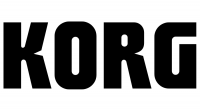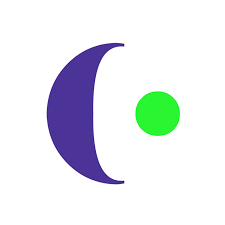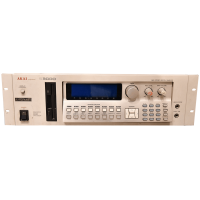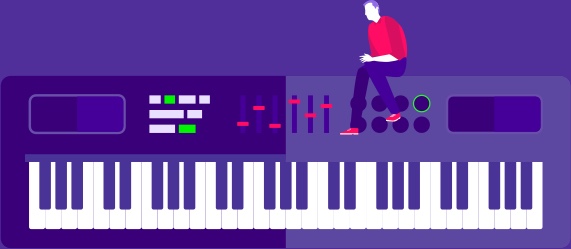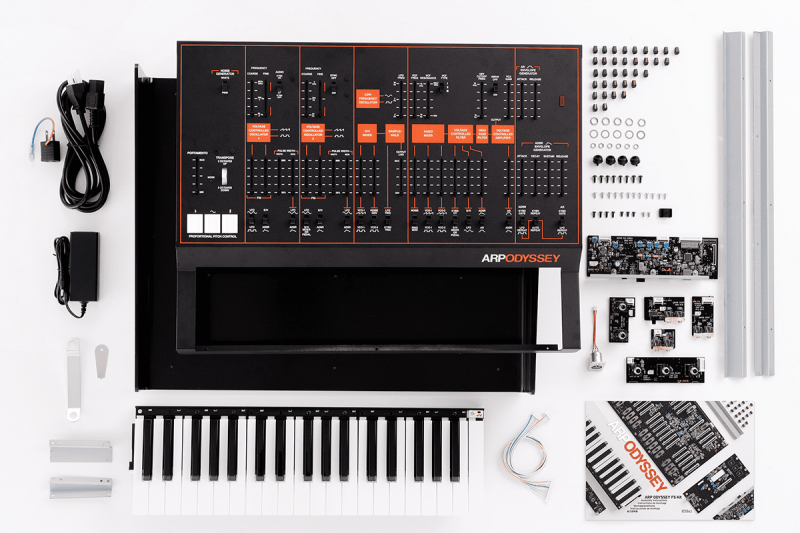
Condition New
Summary
Korg korg-koh-ntsNew starting from : 47,99 €
Used starting from : None available
Reviews (0) :
SIMILAR PRODUCTS
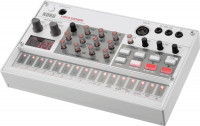
Korg
Korg Volca Sample
Sequence and modify your samples easily. The Volca Sample allows you to read and modify your samples easily. You can also create rhythmic or melodic patterns with the integrated sequencer directly from the famous Electribe series. Is it useful to boast more about its qualities?
153,00 €
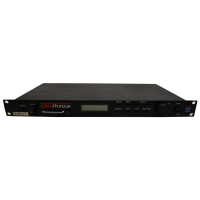
E-MU
E-MU - Ultra Proteus
High quality samples, very powerful filtering. A studio beast in 1U 19" Rack format. Optional front panel sound cards are still available. 14500 Francs in 1994. A very nice opportunity at a good price-quality ratio nowadays. 297 "Z-Plane" filters including flangers, parametric, translation, etc. A few notes and we understand all the E-MU genius.
199,00 €
250,00 €
-20%
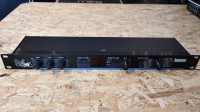
Dynacord
Reflex Dynamic Midi Reverberator
For many people, Lexicon is the definitive brand name for digital reverberation units. With the EMT, Lexicon dominated the market in the 1980s, producing realistic reverberation simulations in a variety of formats ranging from simple rack-mount units like the PCM70 and Lexicon 200 to high-end units with LARC remotes, including the 224XL and 480L. Following their initial success, Lexicon developed its own digital reverb processor, the Lexichip, which allowed them to build cheaper and more compact effects processors. A new version of this processor, the Lexichip II, gave birth to the Lexicon PCM 80 and Reflex. The Reflex is not only a reverb processor. It has a wide variety of programs and, unlike the Alex, a complete Midi specification allowing real-time control of parameters via Midi. Lexicons as old as the PCM70 offer Midi control, but the Reflex is the first to be offered in this price range. The Reflex is designed to be fast and easy to use with 16 presets and 128 user memories (Alex: 16 memories). The front panel is very simple with a signal LED, Input / Mix / Output controls, (Mix varies the mix of effect and dry signal), a Store / Clear button, a Parameter / Learn button (to select the parameter to be edited or to enter APM - Advanced Programming Mode), a Value button (to edit this parameter), a digital display and a Register / Preset button to select a program. The Learn function allows you to patch the Midi signals to control a parameter. Enter APM mode by pressing and holding the Parameter / Learn button, select the parameter to be controlled, send a Midi message and the assignment is made. Each preset has up to 10 parameters that can be edited (Alex: 3), two from the front panel and the rest via the APM. The edited programs can be saved in one of the 128 user memories.
149,00 €
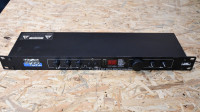
DigiTech
Studio Twin
Based on S-DISC (TM) processing technology, the true stereo effects processor uses a 44.1 kHz sample rate and 18-bit conversion to provide a myriad of tools including stereo reverbs, multi-tap delays, choruses, flashes, tremolos, detuning, and parametric equalizers. With 99 factory programs included, up to 99 user-defined program combinations can be easily edited and recorded via the Studio Twin's simple user interface. The processor also responds to MIDI, so programs can be changed on the fly via a simple user interface.
100,00 €
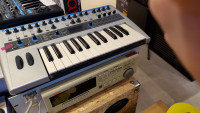
Novation
K-Station
The K-Station is a whole new take on the original Bass Station Keyboard that put British synth makers Novation on the analog synth map! Essentially, the K-Station is an extremely well laid-out and superbly designed 2-octave keyboard version of their new A-Station rack module. It features 8 voices of analog modeled sounds with FM, 12-band vocoder, arpeggiator, reverb and delay effects, 400 user rewritable program memories, and more. Unlike the crowded interface and puny LCD display screen found on the A-Station, the K-Station has a beautiful layout with easy access to its knobs, sliders and buttons. And finally there's a large LCD display!
200,00 €
DESCRIPTION
TECHNICAL CARACTERISTICS
MEDIAS | PHOTOS

Reviews (0)

